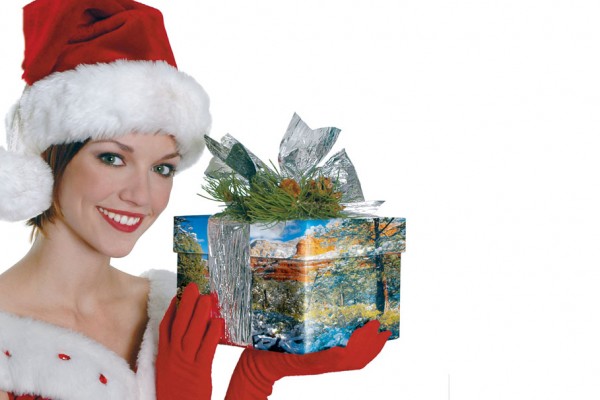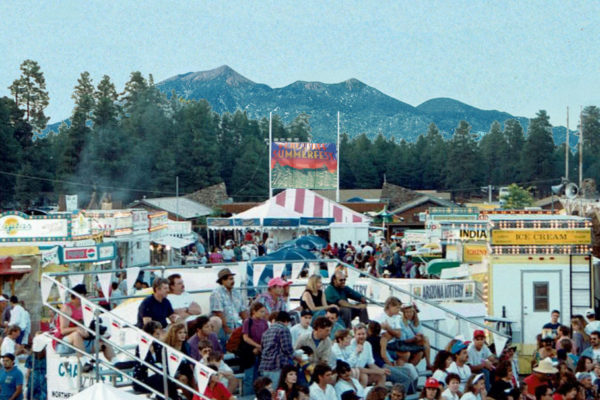Continued (page 4 of 5)
In the early afternoon, we decided we were ready to tackle the “trail” to the bottom of 190-ft. Mooney Falls, about a half-mile hike along the creek and through the campground. I had read quite a bit in advance about this treacherous path carved by miners out of the side of the cliff and I was nervous. It’s no help to know Mooney Falls was named after James (some accounts call him D.W.) Mooney, who fell to his death in 1882 trying to reach the mines in the canyon. I hadn’t been able to find any pictures of the trail so I had no idea what to expect.
At the top of Mooney Falls we gaze down milk-chocolate-colored travertine walls into blue pools nearly devoid of swimmers. The red rock walls narrow even further here and the lush greenery looks like it belongs in a jungle, not the high desert. There was no turning back – curiosity trumped fear.
We start down the rocky path. Narrow and slightly steep, it still isn’t too scary, but after a few hundred yards, it abruptly seems to end. Behind us, we see a large, dark hole in the side of a cliff with a sign warning us to descend at our own risk and be aware of inclement weather. I vaguely recalled reading about tunnels (there seems to be a dispute whether they are natural or manmade) on the way down to the falls just as someone crawls out and tells us to “take it slow.” We take deep breaths, put our cameras in our backpacks and forge ahead.
The trail begins with two vertical caves where you use hands and feet to guide yourself down in relative darkness (there is a momentary break between the caves with a nice view of the falls). This is actually the easy part. Once you emerge from the second cave the rest of the descent makes use of chains, metal anchors (some loose) and, at the very end, two ladders. Oh yeah, it’s slippery from the waterfall spray too.
Looking down from the bottom of the second tunnel proves to be more heart-stopping than the trail itself. We saw one couple turn around at this point – but that’s probably more complicated than finishing the trail. If you’ve ever rock climbed or even bouldered, finding foot and hand holds is relatively easy but you’ll feel all your muscles getting a workout. I was so focused on finding the easiest route I blocked out the height, but I heard other campers say they found that difficult. Take it slow, indeed. I enjoy climbing, and in the end I look back and find it all fun.
Once we reach the bottom we’re standing in the lushest and prettiest part of Havasu Canyon. Mooney Falls is glorious if not a little spooky with the veils of travertine that surround it (again with the melted faces). Trees grow right from the pools at the base of the falls. Benny noted this part of the canyon is one of the few places in the Southwest never to have access to domesticated animals (trust me, Fido is NOT getting down that trail); the lack of grazing animals below Mooney Falls other than some big horn sheep means native grasses grow tall, blowing in the breeze and intermingling with blooming orange monkey flowers and an eye-popping display of wild grapevines that blanket the canyon from side to side.
We hike for about three miles into the canyon, looking up in awe at old ladders with rungs at least six feet apart clinging to the sides of the cliff, left by the miners who invaded the canyon in the late 1800s and early 1900s. We wade across the creek several times, spying underwater plants that are dead ringers for coral, and stop at Benny’s favorite spot, where the serene pools overlook the mouth of Havasu Canyon as it begins to open into the Grand Canyon. If we had gone another mile we’d have seen Havasu’s fourth waterfall, Beaver Falls. It’s possible to hike nine miles from Mooney Falls to where Havasu Creek meets the Colorado River but we’re already psyching ourselves up for tomorrow’s long hike out of the canyon and agree to call it a day.



